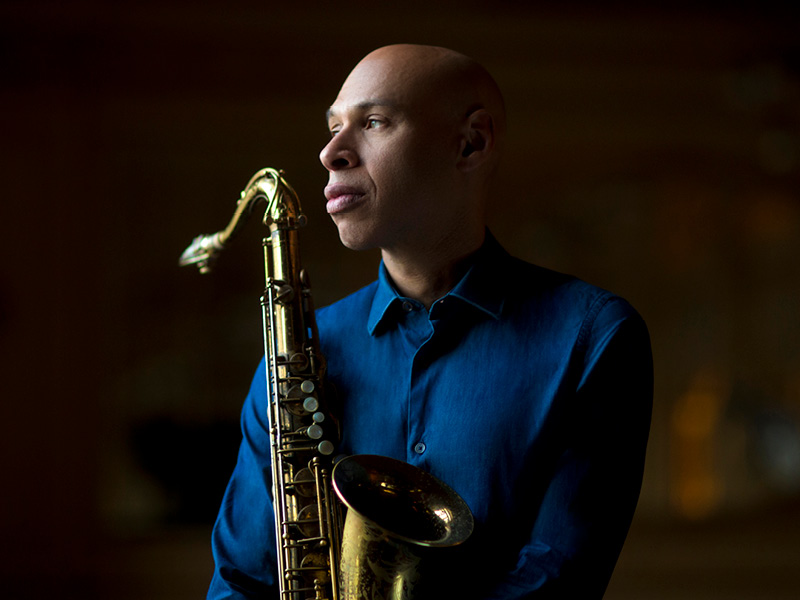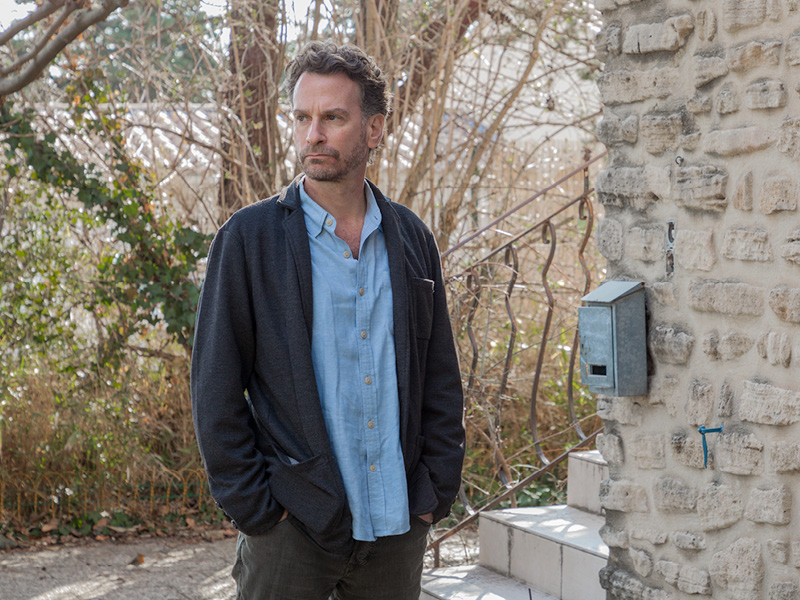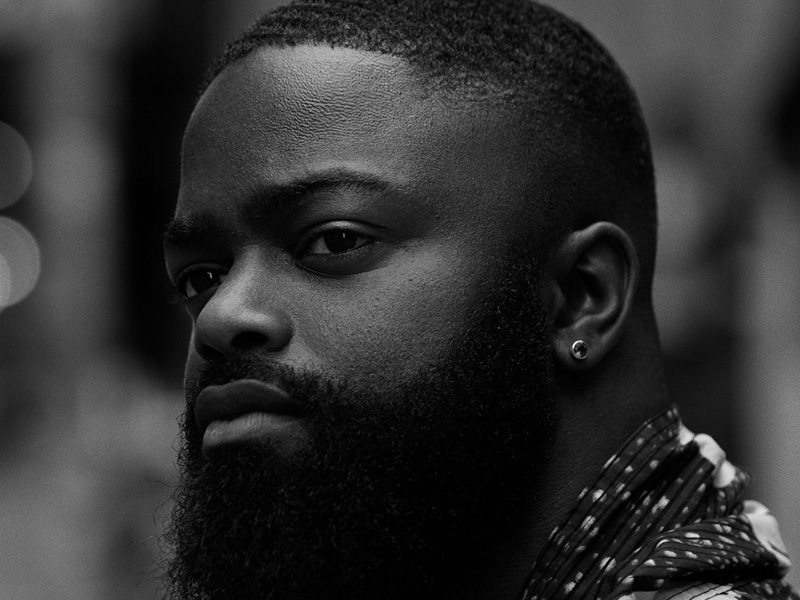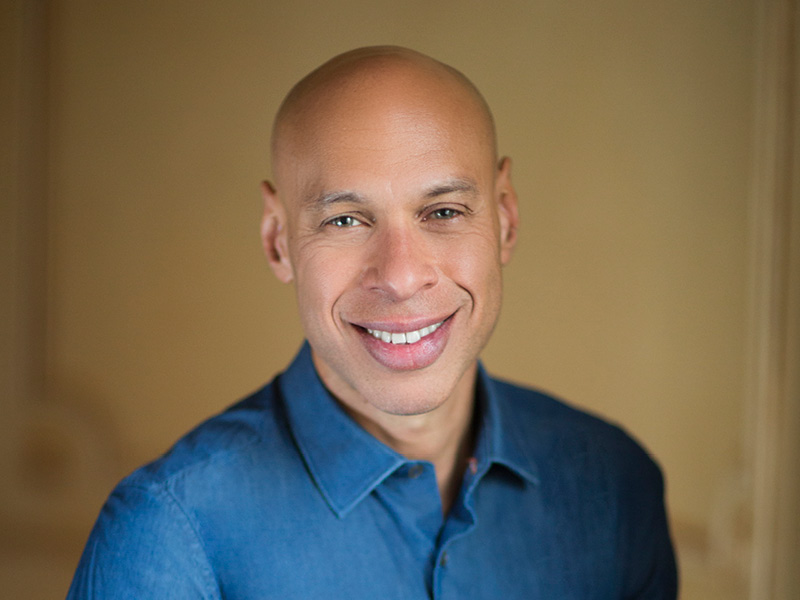




- This event has passed.
Joshua Redman 3×3
Joshua Redman’s latest project is a celebration of the power of three—the music of three iconic jazz composers (Ellington, Monk, and Shorter) interpreted in the classic trio format of saxophone, bass, and drums.
Thursday, May 4, 2023, 7:30 p.m.
tickets
- A: $56
- B: $46
- C: $36
MEMBER BENEFIT: Members at Friends level and above receive 10% off on all tickets to this performance
About this Event
Joshua Redman’s latest project is a celebration of the power of three—the music of three iconic jazz composers interpreted in the classic trio format of saxophone, bass, and drums. The music is drawn from the works of Duke Ellington, Thelonious Monk, and Wayne Shorter, each of whom Redman considers “not just relevant but foundational” for today’s musicians, and the setting returns to a format in which he has excelled throughout his career.
The 3×3 concept emerged, in part, from Redman’s COVID-19 pandemic experience. Literally out the door on his way to the airport for a three-week tour of Europe when the world shut down in March 2020, the saxophonist found himself in the unprecedented situation of not being able to make music with another human being “in a real space, in real time” for more than six months. “When I finally started getting together occasionally with folks for outdoor jam sessions,” he recalls, “the approach was predictably casual: ‘Let’s just play some tunes.’ Naturally, a lot of the tunes that were called were ones written by Duke, Monk, or Wayne.”
While acknowledging the immeasurable importance of prolific composers like Charles Mingus, Ornette Coleman, John Coltrane, Charlie Parker, Benny Golson, and Horace Silver, Redman posits that “one might be hard-pressed to find three others whose oeuvre is referenced as much and is as relevant to the contemporary acoustic jazz conversation as that of Ellington, Monk, and Shorter. ”He views the canonical contributions of these musical masters as key weigh stations in his own artistic development. Redman discovered Ellington at a relatively early stage. “When you’re first learning to play this music, you inevitably encounter Ellington. His songs are so eminently sophisticated but still refreshingly approachable for a beginning improviser, and you can’t get past the fact that he was one of the first to masterfully and convincingly synthesize blues idioms with the lyricism of popular song. ”Monk’s music began to forcefully capture Redman’s attention a bit later, as he became fascinated by the pianist-composer’s “infectious and relentless rhythmic and motivic focus” and the way his songs could “somehow be edgy and oblique yet at the same time so compelling and direct.” And as his interest in jazz deepened even further, Redman gradually embraced and then immersed himself in what he describes as “the floating, magical, mysterious quality” of Shorter’s sound. “Wayne Shorter is sort of like the poet laureate of jazz,” he suggests. “His music can be so evocative, almost dreamlike, yet still crystal clear, firmly rooted, and effortlessly swinging. And, like Duke and Monk, Wayne is a great Black composer, whose work forms the bedrock of our modern-day cannon, and which just so happens to translate surprisingly well in a trio context.”
3×3 takes Redman into what, for him, is a rather atypical focus on repertory. “I’m generally a concept-averse dude,” he admits, “and outside of my years with the SFJAZZ Collective, and to a lesser degree the Still Dreaming band, this may in a way be the most ‘conceptual’ thing I’ve ever done. In the past, I’d never really wanted to pursue a project focusing on any particular composer or period or ‘theme.’ At the same time, I always wanted to do more than just ‘play tunes.’ If I was playing other composers’ music, I’d often feel a bit of a nagging obligation to try in some way to re-fashion or re-arrange their songs—like perhaps that was somehow required in order for me to put my stamp on them, to earn the right to play them. This time: maybe not so much. The beauty and genius of Duke, Monk, and Wayne is that their compositions beg no reinvention. They are so cogent and complete and yet so broadly malleable and interpretable just as they are. Of course, I’m not promising I won’t throw in a few of my own originals or original arrangements from time to time. It’s jazz. It’s improvisation. We go with the flow!”
Redman sees the sax/bass/drums format as presenting an adequate challenge for varying moods and approaches. “There’s always the danger that everything can start to kind of sound the same—a sort of chattering, homogeneous abstraction. The more you strip things away, the more responsibility each musician carries in terms of shaping and coloring the overall experience,” he emphasizes. “You have to do more, which absolutely does not mean that you have to play more—actually it’s often precisely the opposite. But each musician has to maintain a sense of composition and texture and narrative; simultaneous attention to minute detail and awareness of the big picture; a beautiful, full, and flexible sound; and, of course, melodic invention, harmonic acuity, and deep communal groove.”
On these terms, the pandemic has perhaps left Redman especially well prepared. “Some folks seemed to be under the impression that the lockdown was like some sort of composer’s dream, presenting so much free time to write and create. And for a spell there, I started to feel guilty that I was not really doing any of that—that I wasn’t writing my symphony, or at least my string quartet,” he confesses with a chuckle. “But then I realized, and accepted, that without the feedback loop of playing and communicating with other musicians and audiences in real time, my sense of creativity and inspiration inevitably lags. Music for me is fundamentally social. It’s collaborative. It’s conversational. I can’t truly create in a vacuum. But I can still get to work. One thing I have been able to do has been to practice with a level of consistency and commitment I’ve never really shown before. I’ve been able to hunker down, to dig deep, to at least start to address some of the huge gaping holes in my playing and musicianship and craft. Now I’m looking forward to putting all that shelter-in-place shedding to good creative use—hopefully!”
So 3×3 finds Redman applying himself to some of jazz’s greatest works in one of jazz’s greatest formats. “These compositions offer as much inspiration as any three improvising musicians could ever ask for,” he summarizes. “I look forward to discovering them anew on the bandstand and following them wherever the moment leads.”
